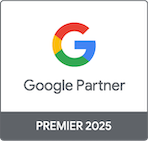
What is GCLID? How Google click identifier tracks PPC performance
Abisola Tanzako | Mar 28, 2025

Table of Contents
- How GCLID Works: Tracking Clicks and Conversions in Google Ads
- Why GCLID matters in digital marketing
- How to troubleshoot GCLID issues in Google Ads
- How GCLID Works: Tracking clicks and conversions in Google ads
- Benefits of using GCLID
- GCLID vs. UTM parameters: What is the difference?
- 1. Manual creation vs. automatic generation:
- 2. Platform flexibility:
- 3. Customization:
- 4. Speed and efficiency:
- 5. Data integration:
- 6. Tracking accuracy:
- How to enable GCLID in Google Ads
- Potential challenges with GCLID
- Strategies for businesses to develop better choices
- FAQs
Over 92% of online advertisers rely on Google Ads, making GCLID a crucial tool for tracking conversions (Google, 2023). Every day, Google handles over 3.5 billion searches, and businesses leverage digital advertising to reach this massive audience. According to Statista, global digital ad spending hit $601.84 billion in 2023 and is projected to reach $802 billion by 2026.
Organizations use Google Click Identifier (GCLID) to optimize ad performance and track and analyze user interactions. Despite its importance, many marketers are still unclear about how GCLID works and why it matters for campaign success.
How GCLID Works: Tracking Clicks and Conversions in Google Ads
GCLID stands for Google Click Identifier. It is a unique tracking parameter that automatically appears in URL addresses when users click on advertisements through Google Ads. Through its alphanumeric sequence, which appears as cryptic strings such as “CjwKCAiA1uKBBhA8EiwAXhHo,” marketers can track every click, from advertisements to website actions, including purchases and form submissions.
Google Click Identifier is an online detection code for marketers. The tracking parameter functions as a digital identifier that associates every click with comprehensive information about the advertising campaign, including keyword selection, ad group allocation, and device specifics.
Why GCLID matters in digital marketing
Google Ads marked an average return of $2 in business revenue against every $1 spent by its advertising clients throughout 2022. What methods do they use to determine which techniques are effective?
The answer to proper measurement is within tracking tools specially designed for this purpose, such as GCLID. According to test results conducted by WordStream in 2023, Google Ads users who track their campaigns through GCLID generate a 30% conversion boost.
How to troubleshoot GCLID issues in Google Ads
Here are ways to troubleshoot GCLID issues in Google Ads:
- Check auto-tagging: Ensure auto-tagging is enabled in Google Ads under Account Settings.
- Verify URL redirects: Redirects can strip GCLID from URLs; check with your web developer.
- Confirm Google Ads and GA4 linking: Ensure your Google Ads and Google Analytics 4 accounts are correctly linked.
- Use URL debugging tools: Test landing pages in Google Tag Assistant or Chrome Developer Tools.
- Check CRM or backend systems: Some platforms may not capture GCLID; confirm that data is stored correctly.
- Monitor click and conversion discrepancies: Compare Google Ads and GA4 reports for missing data.
How GCLID Works: Tracking clicks and conversions in Google ads
Enabling auto-tagging in Google Ads allows this platform to add a GCLID parameter, which the destination URL of your ads receives automatically. The mechanism can be explained in its basic format as follows:
- User clicks an ad: A potential user sees your ad on Google Search or a network site and clicks on it.
- GCLID is generated: Google adds a special GCLID to the URL (www.example.com/?gclid=CjwKCAiA1uKBBhA8EiwAXhHo).
- Data is recorded: When the user visits your website, the GCLID is stored in a cookie or delivered to your analytics platform.
- The analysis is performed: Google Analytics and others use the GCLID to attribute the visitor behavior (e.g., a sale) back to the specific ad click.
According to a WebFx report, this seamless integration is why over 80% of businesses using Google Ads use auto-tagging.
Benefits of using GCLID
Benefits of using GCLID include:
- Accurate attribution: To have exact knowledge about which ads, keywords, or campaigns are generating conversions.
- Cross-platform insights: To associate Google Ads with Google Analytics to gain knowledge of user actions.
- Time saver: Auto-tagging prevents time wastage by eliminating the need to manually add URL tracking parameters like UTM codes.
- Improved reporting: To gain visibility into detailed reports that provide a more in-depth understanding of campaign performance, allowing intelligent decision-making.
- Enhanced audience targeting: By analyzing the GCLID data, you can identify effective audience segments and tailor your marketing to target similar users.
- Effortless integration with CRM Platforms: GCLID system integration with Customer Relationship Management (CRM) platforms permits businesses to monitor lead and conversion activity across the entire customer funnel, generating a complete assessment of customer advancement.
GCLID vs. UTM parameters: What is the difference?
While GCLID and UTM parameters track campaign performance, they serve different purposes.
1. Manual creation vs. automatic generation:
- The UTM parameter provides marketers with a flexible solution to manually create customizable tracking details for their campaigns, which work across multiple digital channels.
- Through Google Ads platforms, GCLID automatically generates this tracking parameter without human intervention, leaving insufficient flexibility options.
2. Platform flexibility:
- UTM parameters serve multiple platforms because they function within social media, email campaigns, and digital marketing channels.
- Only Google Ads allows tracking of its campaigns through GCLID because this identification code was developed specifically for Google Ads.
3. Customization:
- UTM parameters provide customization options through tracking tags. These tags enable marketers to match specific marketing objectives by setting source, medium, campaign, term, and content parameters.
- The GCLID tracking identifier provides no customizability since it creates and links to specific Google Ads.
4. Speed and efficiency:
- UTM parameters demand independent configuration for each campaign, yet they deliver exact tracking capabilities despite the significant time it takes to set them up.
- GCLID operates through automatic tracking that offers efficiency and cost-effectiveness to marketing teams.
5. Data integration:
- The UTM parameters enable integration with Google Analytics and Google Analytics tools, producing wide-ranging analyses of user behavior on multiple channels.
- Google Analytics users benefit from seamless tracking through GCLID, which provides enhanced attribution and conversion measurement across the Google platform.
6. Tracking accuracy:
- The setup process for UTM parameters must be precise. They deliver exceptional precision for following specific marketing campaigns across different platforms.
- The GCLID system allows advertisers to track the specific ads, keywords, or campaign content through Google Ads, resulting in customer conversions.
7. Combined usage:
A 2023 HubSpot report shows that marketers now employ UTM parameters with GCLID because these strategies provide complete monitoring capabilities through individual performance benefits.
The contrast between GCLID tracking and UTM tagging profiles allows for an improved comprehension of their usage benefits for marketing strategies.
How to enable GCLID in Google Ads
You need to activate auto-tagging in your Google Ads account before using GCLID.
- Access the “Account Settings” option within Google Ads.
- To enable “Auto-tagging,” navigate to “Tracking” and check the corresponding box.
- Save your settings, and then GCLID tags will display in your URLs.
Potential challenges with GCLID
Potential challenges with GCLID include:
- Privacy regulations: Organizations that follow GDPR (General Data Protection Regulation) and CCPA (California Consumer Privacy Act) regulations are limited in their ability to track individuals.
- Cookie blocking: GCLID tracking capabilities face obstacles from users who block cookies worldwide, which reach 41% for consumers aged 50 and above and 20% for those aged 25 to 34, as shown in a 2023 Statista study. GCLID experiences tracking discrepancies because it cannot correctly monitor user behavior, resulting in missing information for analysis.
- Website compatibility: Many online websites do not support the necessary GCLID parameters in their configuration. A website that fails to identify or incorrectly processes GCLID creates tracking data inaccuracies, leading to compromised analysis results.
- Auto-tagging issues: GCLID relies on auto-tagging for accurate tracking. However, its effectiveness in measuring campaign performance will diminish if incomplete tracking data results from disabled auto-tagging functionality or incorrect setup of this feature.
- Regular testing: Accurate tracking with data collection requires marketers to check their GCLID setups regularly. Marketers must verify two key elements: the status of auto-tagging and the website’s ability to identify GCLID parameters and correctly record data tracking.
- Data gaps: Various factors, including blocked cookies, privacy regulations, and website platform compatibility issues, can interrupt data collection through GCLID. Data collection gaps require continuous monitoring and adjustment sessions to minimize database deficiencies and ensure complete data acquisition.
Strategies for businesses to develop better choices
Digital marketing professionals need to understand GCLID tools because the rapidly changing digital environment requires them to survive. The Google Click Identifier connects advertisement click data and conversion tracking, enabling businesses to make better strategic choices. Using GCLID makes all the difference in digital marketing success because it determines whether your campaign will achieve greatness or failure.
FAQs
Q. 1 Can I track GCLID data in Google Analytics 4?
Yes, but you must link Google Ads to GA4. GCLID helps track ad clicks and conversions in GA4 reports.
Q. 2 How does GCLID differ from manual UTM tracking?
Google Ads automatically generates GCLID for precise ad tracking, while UTM parameters are manually added for broader campaign tracking across platforms.
Q. 3 Does my website require GCLID when I deploy UTM parameters?
GCLID functions best with Google Ads tracking, though you do not need it for Google Analytics.
Q. 4 How long does a GCLID last?
Google Analytics stores data from GCLID based on cookie settings but maintains it for 90 days until expiration dates vary between configurations.





